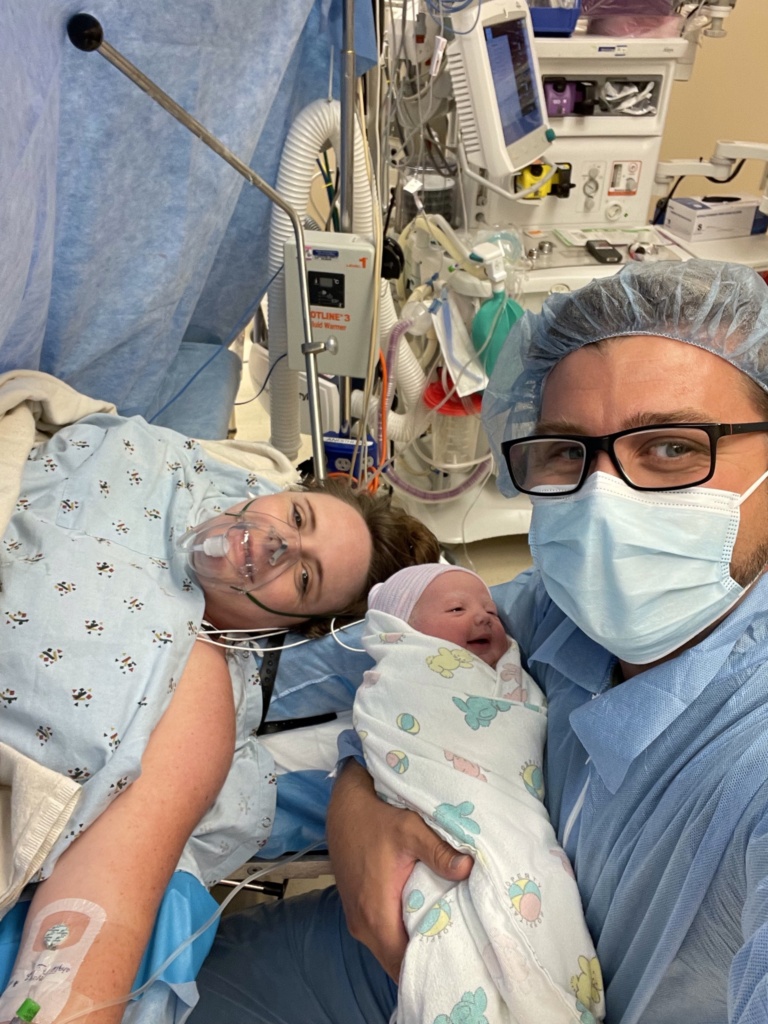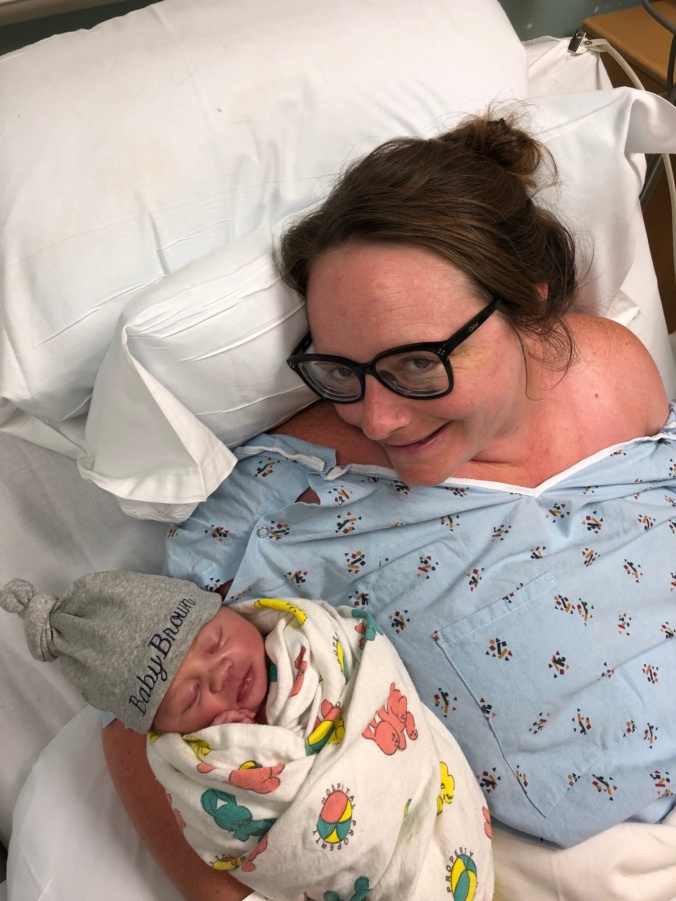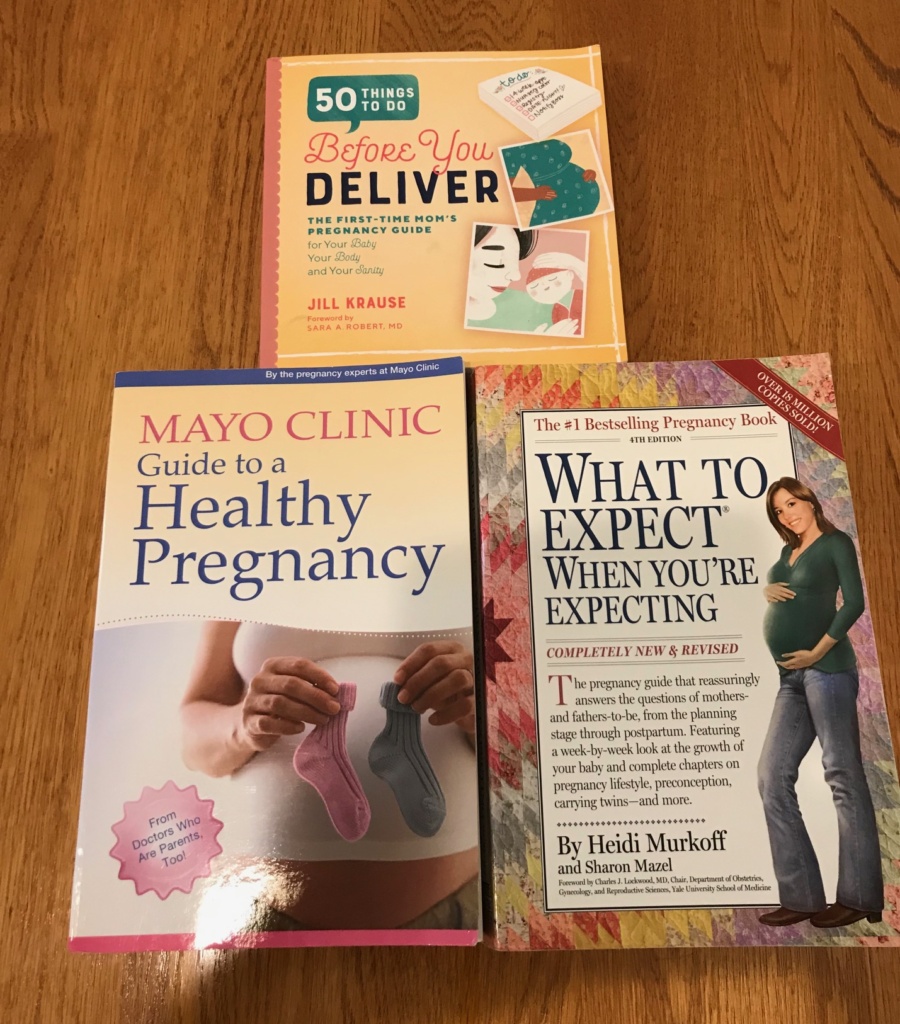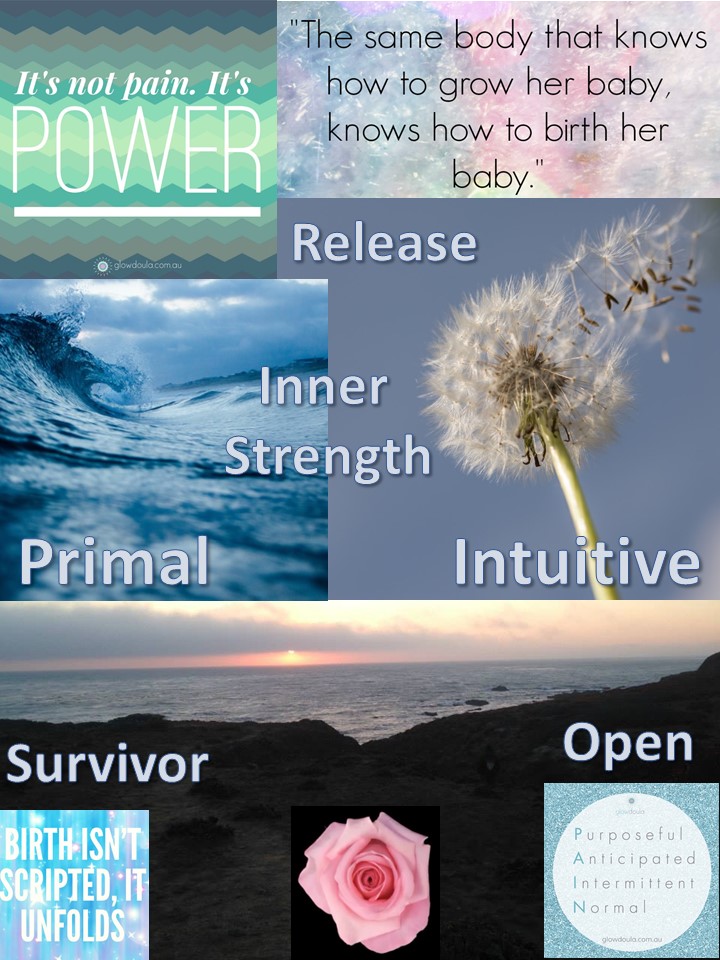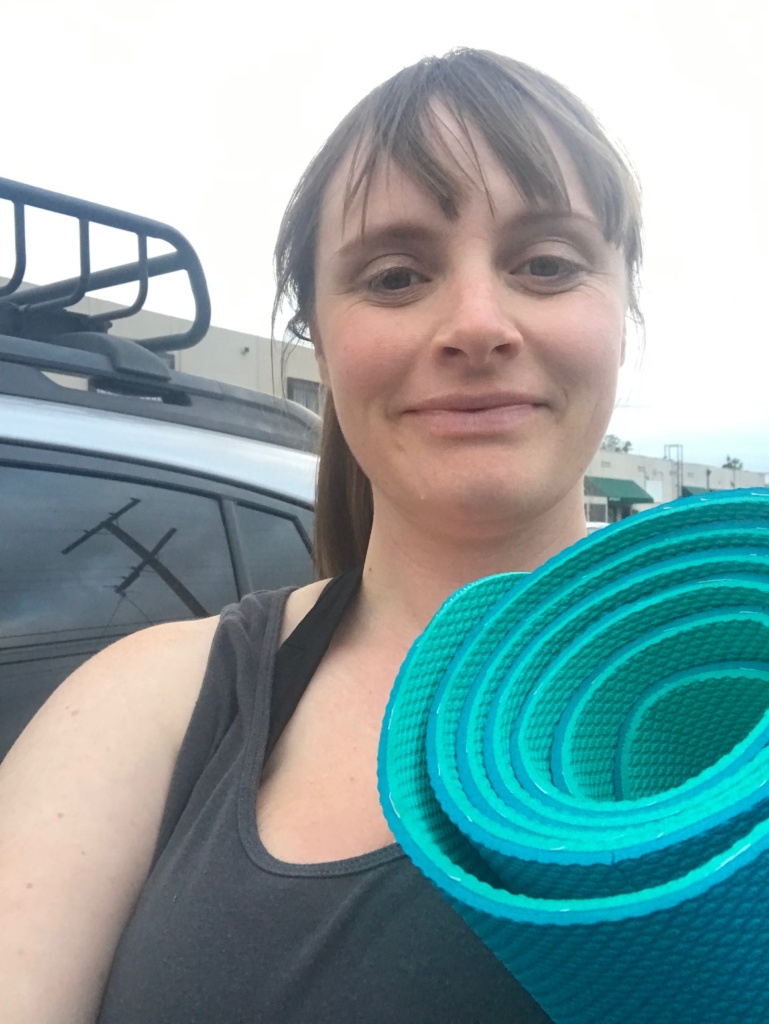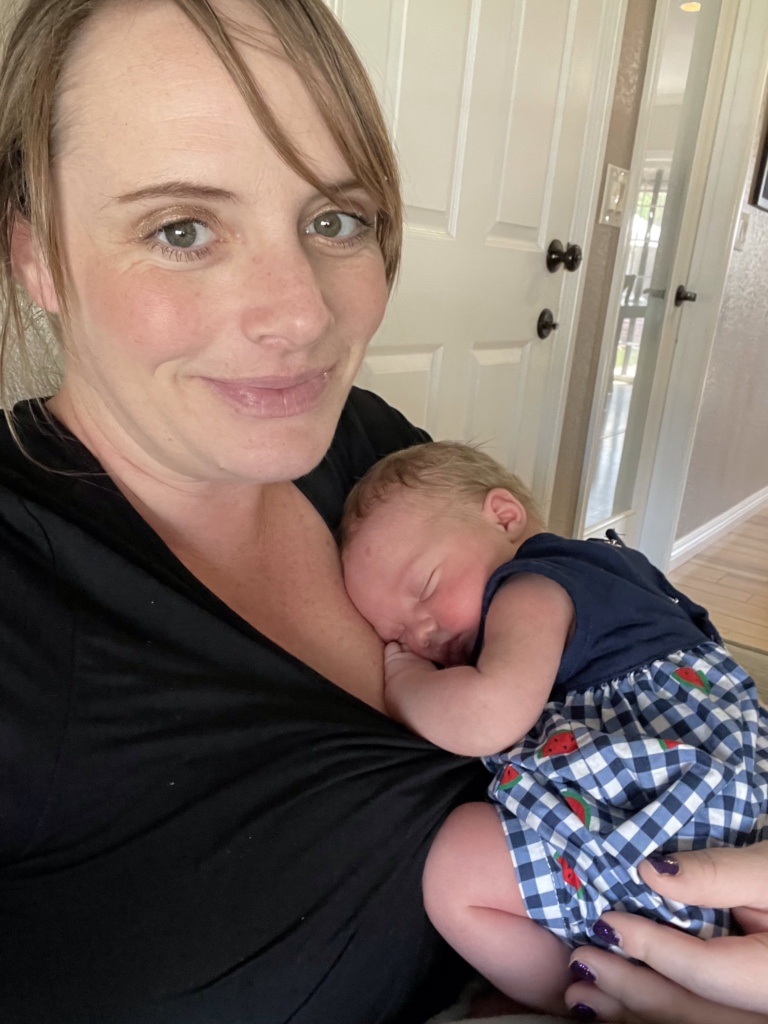
Sasha Mae Brown was born via scheduled C-section on Wednesday, August 11th, 2021. Scheduled C-sections typically lend themselves to routine and uneventful birth stories. It could be as simple as selecting a date on a calendar, counting down the days, packing your bags and having a baby. However, Sasha’s birth story was anything but simple.
Sasha’s older sister Scarlett was born during the summer of 2019 after a failed induction. With Scarlett I did not want to be induced, but was pressured into it by my healthcare providers. I have chronic hypertension and best practice is to induce at 39 weeks. Many physicians would try to induce sooner than that. I pushed back as much as I could, convincing my provider to schedule the induction for 40 weeks and 1 day. After days of labor that culminated in nearly 4 hours of pushing, we went into the operating room to deliver Scarlett via C-section. It was a difficult recovery, since I had essentially had the worst of both worlds–the physical pain of labor, prolonged pushing and then the surgery on top of it. It was not a scenario I wanted to repeat and I couldn’t help but think that she was just not ready. If we had not induced so soon Scarlett could have made her debut naturally and would have been much more willing to descend if she had initiated the birth.
I got pregnant with Sasha at 15 months postpartum. My first birth was still quite fresh in mind, so I wanted to avoid induction at all costs with my second child. My goal was to go into labor spontaneously and to have a successful VBAC (Vaginal Birth After Cesarean). From the very beginning, I received pushback from the slew of different OBGYNs I saw at Kaiser throughout my prenatal care. I was surprised by this, given the high success rates of VBACs and that Kaiser seemed to promote vaginal deliveries as the best option in nearly any scenario during the childbirth courses we had taken two years earlier. Yet here I was running into multiple roadblocks and skeptical faces as I tried to advocate early and often for the birth that I wanted.
In my second semester, I switched back to the South Bay / Harbor City hospital where I had delivered Scarlett. A pregnant friend recommended the OBGYN and midwife she was seeing there, telling me that they were not pushy about setting any induction date for her.
I also enlisted the help of a Doula, knowing that success rates are higher for women who have additional support from a Doula. Meredith was great–she met with us in person three times before the delivery. She helped me feel ready mentally and encouraged me to relax.
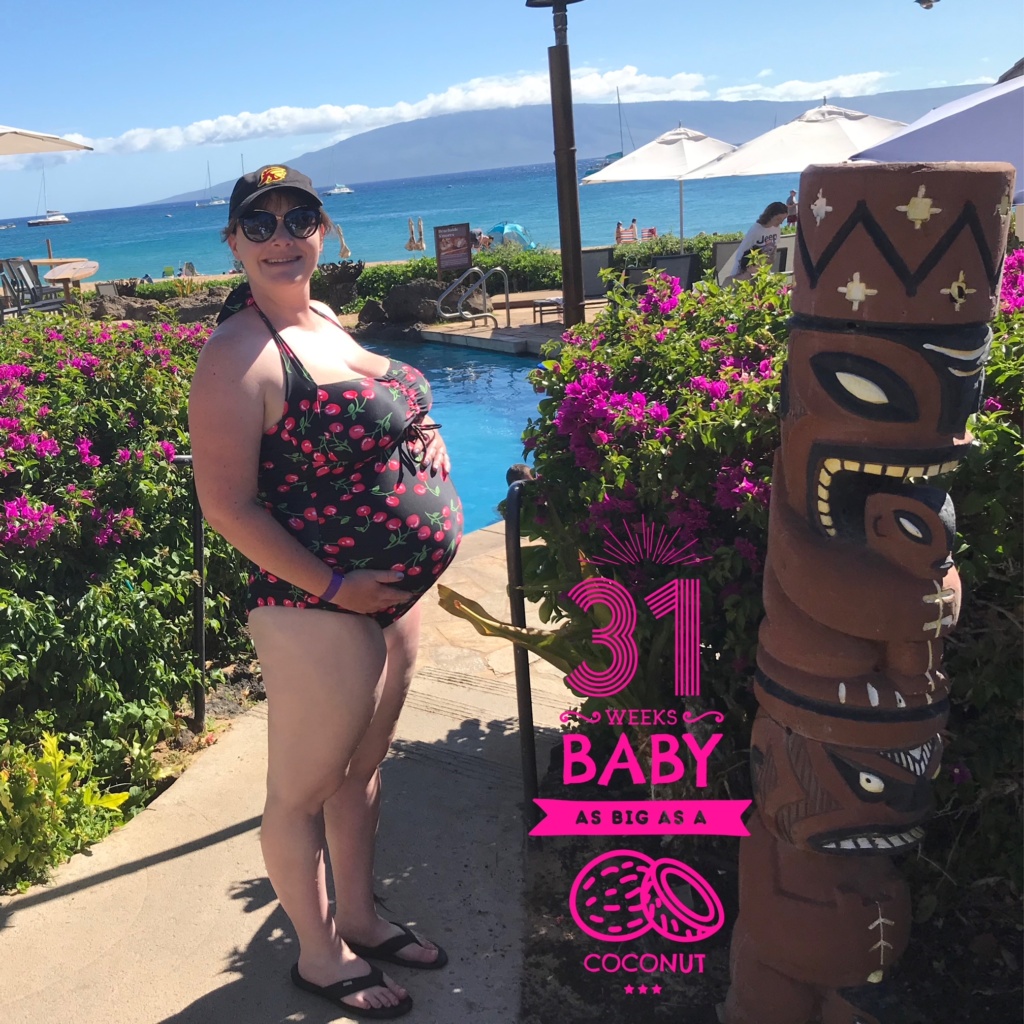
JB and I took a babymoon to Maui over Memorial Day weekend and while I was trying to relax and enjoy the sunshine, I received a phone call from my OBGYN on a holiday. Since it was a holiday, I answered to make sure it wasn’t something urgent. She told me she was reviewing the notes from my first delivery and that the doctor who performed the C-section wrote in the notes that I had CPD (Cephalopelvic distortion), which essentially means that my pelvis was too small for delivery. I was never told that verbally, and through the help of my doula I had been well educated about the myths surrounding CPD and the rarity of true CPD. My doctor told me that she was now recommending that I change my birth plan from a VBAC to a scheduled C-section, stating that she didn’t want me to go through a long labor just to fail in the second stage again.
Although the conversation plucked me straight out of vacation mode and into fits of tears, I told her as best I could that I wanted to stick with my plan. I was well informed of my options and was choosing to pursue VBAC.
As my due date of August 4th loomed nearer, Kaiser started turning up the pressure to get a date on the calendar. They wanted to either induce me or schedule a C-section. The time came for the doctor to let me know that my chronic hypertension meant I should get this date on the calendar for no later than my 40 week due date: August 4th. Prepared for this, I politely declined. I was firm that I did not want an induction. While I really didn’t want to feel the calendar crunch, I understood that I was going to have to make a choice if the baby didn’t come. With my knowledge that the ideal timeframe for birth is 39-41 weeks for healthy pregnancies, and understanding that I was already in a high enough risk category where professionals recommended delivering earlier, I decided I wasn’t comfortable going past 41 weeks. So I would either need to schedule a C-section for August 11th or schedule an induction for a few days earlier if I wanted her out by 41 weeks. I knew I wanted to give the baby as much time as possible to initiate labor. I also knew I wanted to avoid a repeat of my first labor experience, which all began with an induction. Considering all these factors, I begrudgingly conceded to scheduling a C-section with my OBGYN for the evening of August 11th, even though I hoped with every fiber of my being that I would not need the appointment.
Since she was my second baby, I also had childcare to consider. My parents were planning to fly down and be in town for Scarlett’s birthday on July 31st and about 2 weeks afterward. I didn’t know if the baby would come early or late, but I knew that she needed to come and we had to be released from the hospital by the time their return flight was scheduled–August 14th.

As I drove to my Non-Stress Test appointment on July 27th, just after I picked up my parents from LAX, I started to feel a funny crampy sensation. It seemed to be coming at regular intervals. I was incredibly excited. I had heard so many birth stories where the mom’s body kicks into labor as soon as she has secured childcare for older children. When I arrived at the NST, I was overjoyed to see that the crampy sensation was indeed coinciding with the contractions that the monitors were picking up. At 38 weeks and 6 days, I was thrilled to think that my labor might be starting.
Unfortunately, the contractions subsided later that evening and I could no longer feel them by bedtime. On Friday, July 30th I had my 39 week OBGYN appointment. Once more, she tried to offer me an induction or C-section date for the following week. I declined again as my blood pressure readings had been beautiful, usually in the 110s/high 60s. She performed a cervical check–and revealed some great news, I was already 3 centimeters dilated and about 50% effaced. During my pregnancy with Scarlett, I was only about 1.5 centimeters dilated before the induction and remained there for the first 24 hours or so of labor until I got the epidural. So I was already farther along! I was so excited and we went home that morning with lots of hope. It didn’t seem possible that this baby was going to stay inside for another 12 days!
In the afternoon, we had to return to the hospital for a growth ultrasound. Apparently because of my high risk pregnancy (due to chronic hypertension which was never an issue in either pregnancy), they wanted to make sure the baby was not too small or too big. I was a little leary of the extra exam. They hadn’t required it with my first pregnancy and I had heard many stories about extra exams leading to unnecessary interventions. But I agreed to get the scan done since my doctor really wanted me to.
They were 45 minutes late calling me into the appointment. I was so upset and had nearly got up to leave before they finally called my name and told me it would be quick. The tech was true to his word and told me that the measurements were looking good. I was relieved and glad to get home to my parents and Scarlett, who was anxiously awaiting her favorite Friday night dinner of beans and rice from the local Mexican place on the eve of her 2nd birthday.
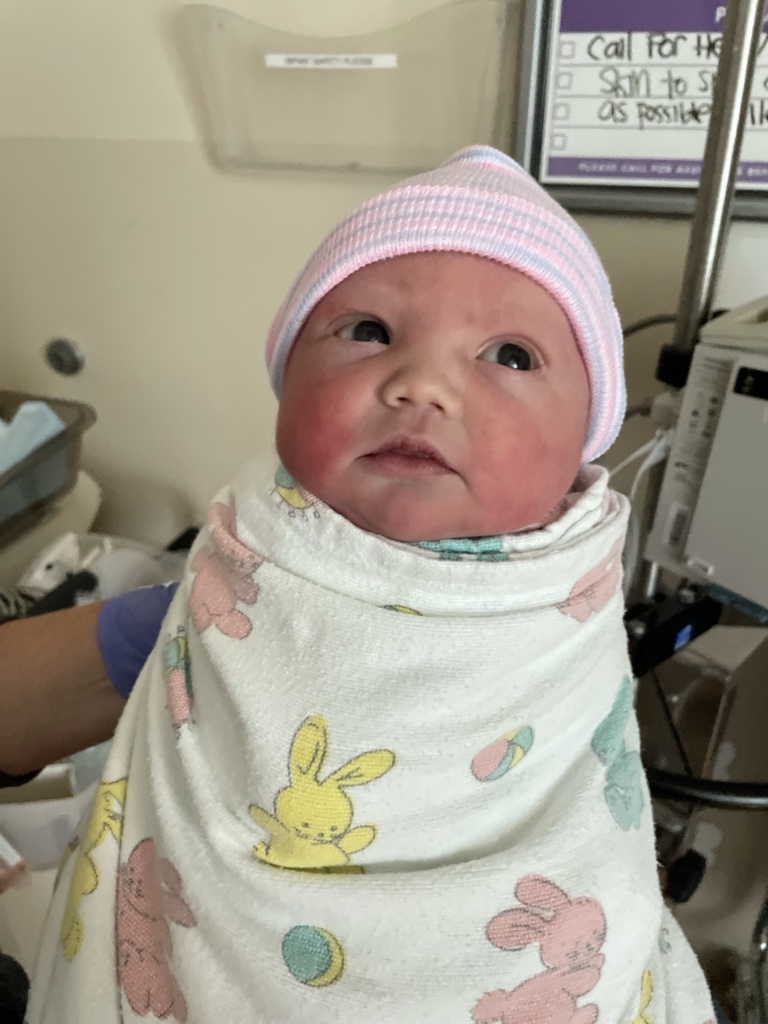
Saturday, July 31st was Scarlett’s second birthday. We took her to swim lessons in the morning and she had a blast. Everyone was in good spirits. When we got home I put her down for a nap and sat in the room with her while she fell asleep, a common request that she had at that age. I checked my email on my phone and saw the standard Kaiser email indicating that my results from the growth ultrasound were in. I opened the app, expecting to see everything well within normal range. While the measurements looked good, I was shocked to see that the fluid levels were low and highlighted in italics as falling outside the normal range. My heart started racing, as I was worried that this was indeed going to lead me toward the unwanted interventions and recommendations to induce.
Sure enough, labor and delivery called within an hour and told me I needed to come in and get the fluid levels checked again since they were low on Friday’s scan. We were planning to have a small group of friends over in the evening to celebrate Scarlett’s birthday with cupcakes. The big party had been 3 weeks earlier as we knew the risks with making any firm plans so close to a due date.
I grabbed my purse and JB and headed for L&D, telling my parents we’d be back soon—hopefully before Scarlett woke up from her nap.
At Labor & Delivery, I was placed in a triage room and hooked up to the monitors for a Non Stress Test. We waited anxiously, hoping that we could get some attention soon so that we could head home and celebrate Scarlett’s birthday.
When the medical team finally came in, they performed the ultrasound and had some bad news. The fluid levels had decreased since yesterday. However, they explained that it wasn’t an exact science because the measurements could be obscured by the baby’s position. So it was possible that she was blocking their view of the available fluid pockets. But that wasn’t the only problem. They had also measured a heart deceleration while I was hooked up to the monitors. Baby’s heart rate had recovered, but given that I was full term at 39 weeks and high risk, they were recommending that we stay and get induced.
The entire pregnancy the one day that I did not want Sasha to be born on was Scarlett’s birthday. It was already going to be hard enough with birthdays within a week or two, they didn’t need to share the exact day. Plus, I did not want to be induced. We called our doula, who told us the flaws of the fluid measurements and that low fluid levels was not linked to adverse outcomes at full term. She encouraged us to leave, and that’s what we wanted to do too.
It was difficult to make a decision to go Against Medical Advice (AMA) and leave. I was nervous about it as I have been a believer in western medicine since it saved my life in 2012. But I knew what I wanted out of my birth plan, and I knew that I wanted to spend Scarlett’s birthday with her. I wasn’t ready to stay then. At the very least I needed to go home and celebrate Scarlett’s birthday. I asked if they could check my cervical dilation, but they said they would not until I agreed to stay.

We left anyway. I felt a little crazy and rebellious on the drive home but I also felt like I was finally standing up for myself after being pushed around during my first pregnancy. At home, we had cupcakes and sang to our two-year-old. It was a restless night of sleep for me as I worried that my baby might be in danger, maybe without enough fluid, maybe laying on her umbilical cord which could have caused the deceleration detected at the hospital.
They had promised to call us in the morning and let us know when a bed was available. I still wasn’t sure that I even wanted the induction. But after talking it through with Meredith, I felt like I could possibly be induced and have a different outcome. After all, the circumstances of the first time were markedly different. I had hardly been dilated at all and now I was already at a 3. My body remembered how to get to a 10 and it could be easier this time. Maybe just a little bit of Pitocin would push me into labor. But maybe not. Maybe the contractions would be as intense as they had the first time and I would end up with another cascade of interventions and a C-section.
But I had said I would do what I had to to protect my baby, and now it sounded like she might need to come out. Maybe I couldn’t wait as long as I wanted to. I spent the day Sunday trying to psyche myself up for an induction that I had spent my whole pregnancy swearing I wouldn’t get. It was evening, after 5PM before they called to say that a bed would be ready for me at 7PM. We said good-bye to Scarlett and my parents. This time our bags were fully packed and ready to go. We stopped for ice cream on the way then made the familiar drive to Kaiser South Bay as the sun set. It was surreal to know we’d be coming home with a baby. Her birthday would likely be August 2 or 3. She might share her special day with my dad (8/2).
When we arrived, we had to wait. And wait and wait. I called Meredith to let her know we were just waiting and that we wouldn’t need her to come over until the induction actually started, which could be a while. Labor & Delivery was quite busy. I had been told that it was a pandemic baby boom and they had a lot of trouble finding beds for women.
When we were finally admitted into the same triage room as the previous night, we were met with a kind a doctor who performed an ultrasound and checked my dilation. She had some good, but shocking, news. She said that she was seeing plenty of fluid on the ultrasound, baby had several pockets that were sufficient to keep her well protected in the womb. I was also at 3 dilation and even more effaced. The baby’s heartrate was beautiful on the monitor, no decelerations or other signs of stress. My blood pressure was excellent. She told us that we did not have to stay if we didn’t want to. The induction wasn’t medically necessary, although since I was full term she recommended that we stay. She said induction would likely be easier starting from a 3 and that the baby wasn’t going to get any smaller if I decided to wait, which could make for a more difficult delivery.
It was a tough decision. We had all our stuff there. We had said goodbye to Scarlett and promised baby sister upon return. I had spent all day trying to convince myself to go against my original plan even though I knew in my heart I did not want to be induced. But we decided to leave. And this time they didn’t make us sign the AMA paperwork. The doctor had said we were free to go if we wanted to and the baby was doing well. It was quite the roller coaster of events in one weekend. We went home, happy, tired, and hopeful that our baby girl still had time to come on her own. After all, she still had 10 full days until 41 weeks.

What I hadn’t anticipated was how difficult the ‘days between’ would be. I hit 40 weeks on JB’s birthday, August 4th, a Wednesday. I had some contractions that day which seemed to intensify and I really hoped that it was happening. But once again they fizzled out. After hitting 40 weeks, the countdown was really on. I was officially past my due date and now had to hope that the extra week I had built into my birth plan would make a difference.
Every day that week was excruciating mentally. We waited. And everyday she didn’t come we grew more and more anxious. We knew the clock was ticking down to the scheduled C-section and to my parents departure date.
On Thursday, August 5th we had an appointment with a nurse practitioner. We had intended to go into it changing our minds, choosing to schedule an induction rather than a C-section. I had been thinking a lot about what the doctor said, and Meredith had been working on convincing me too. I could go for it with the induction and likely get different results, starting from a 3.
The nurse practitioner delivered some shocking news. I was now barely a 1 and my cervix was hard, not effaced. She checked me twice as I relayed to her that two different doctors had told me I was a 3 the previous week. She said that was no longer the case. I had regressed. I was numb with the horror of the revelation. I had thought I would be further along. And yet, I had actually regressed. She said that I was not favorable for induction. We took a few minutes to try to decide what to do. In the couple minutes that passed while she stepped out of the room, my pendulum swung back toward the C-section. I didn’t want the same experience as before after receiving this terrible news.
Devastated, we drove home with the C-section still scheduled. It now felt like it was impending quickly. We decided not to tell any family members about the regression, hoping that if we didn’t say it out loud I could will it not be true. I could mentally coax my cervix into opening.
The next few days I did all the induction things. I walked like crazy. Ate spicy foods, dates, pineapple, did sidewalk walking, had sex and even got out the pump to try breast stimulation. Nothing seemed to be working. Now I felt no contractions. I just felt a sinking sense that my baby would not come, even though I desperately clung to each new day as a possibility that I may get to experience the wonderful spontaneity of labor’s onset.
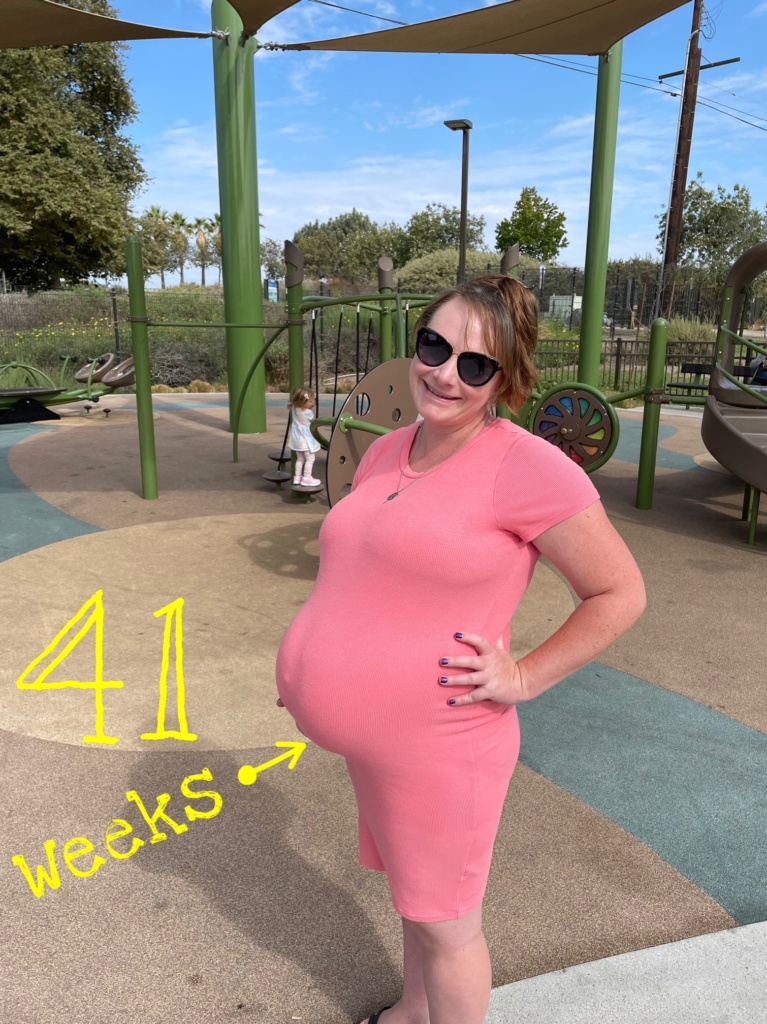
But baby never came, and on Wednesday, August 11th, we drove back to Kaiser for the scheduled C-section. There were contractions on the monitor, but I didn’t want to be checked. They offered an induction but I turned it down, knowing now that I needed to get home and wanted at least a day with my parents in the house to meet the new baby before they had to return home.
The scheduled C-section was a much more calm and routine process compared with the unscheduled one I’d had during labor 2 years earlier. An all female team delivered my baby and at 6:34PM Sasha Mae was born. She was beautiful, with big blue eyes and the slightest mop of white blonde hair crowning her head. For a scheduled c-section, her birth was certainly accompanied by a roller coaster of emotions. But in the end, she was happy and healthy and I was able to be in charge of my birth, making choices for myself right up until the surgery.
